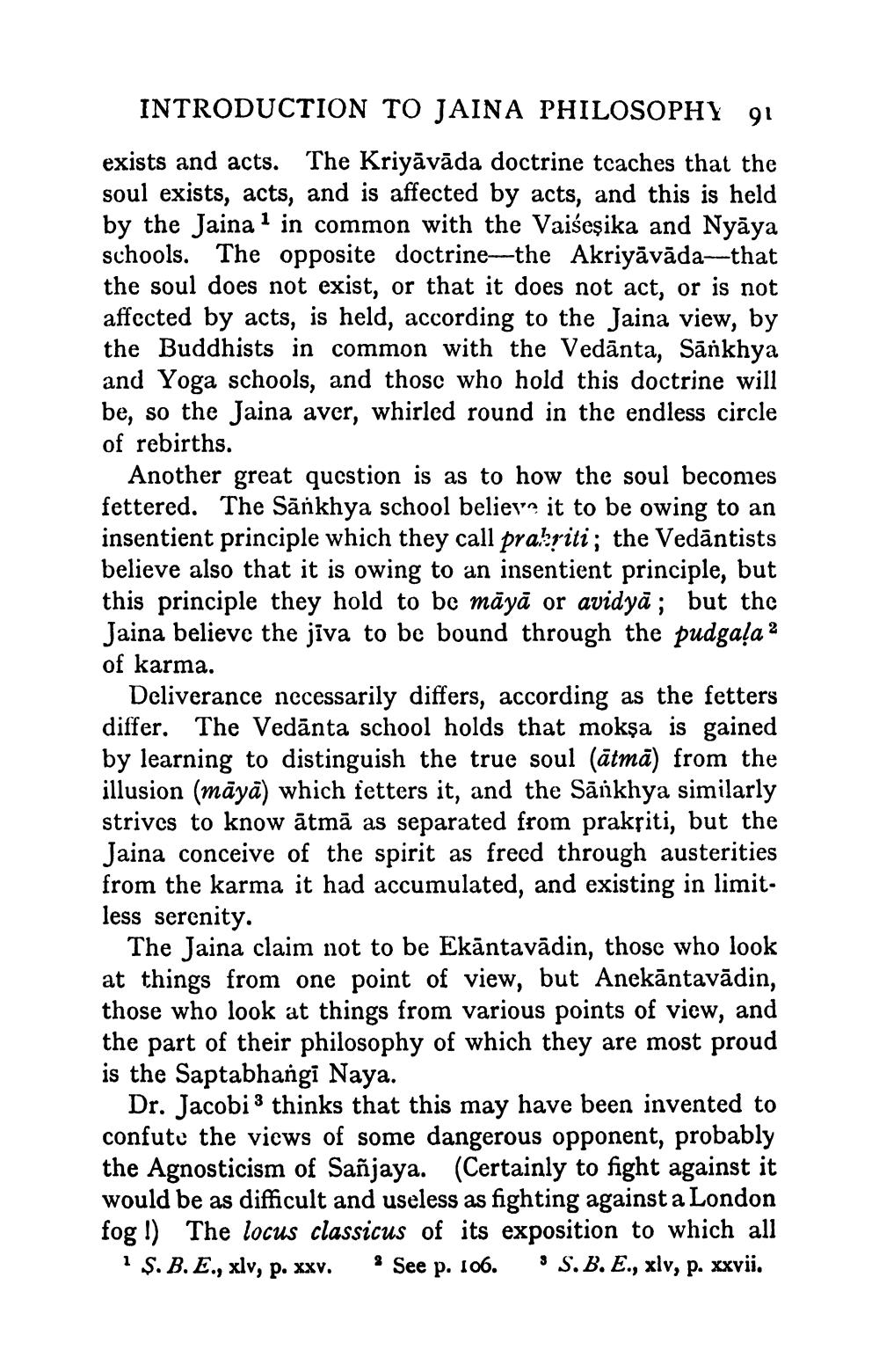________________
INTRODUCTION TO JAINA PHILOSOPHY 91
exists and acts. The Kriyāvāda doctrine tcaches that the soul exists, acts, and is affected by acts, and this is held by the Jaina 1 in common with the Vaiseșika and Nyāya schools. The opposite doctrine-the Akriyāvāda--that the soul does not exist, or that it does not act, or is not affected by acts, is held, according to the Jaina view, by the Buddhists in common with the Vedānta, Sānkhya and Yoga schools, and thosc who hold this doctrine will be, so the Jaina aver, whirled round in the endless circle of rebirths.
Another great question is as to how the soul becomes fettered. The Sānkhya school believe it to be owing to an insentient principle which they call prakriti; the Vedāntists believe also that it is owing to an insentient principle, but this principle they hold to be māyā or avidyā; but the Jaina believe the jīva to be bound through the pudgaļa 2 of karma.
Deliverance necessarily differs, according as the fetters differ. The Vedānta school holds that mokşa is gained by learning to distinguish the true soul (ātmā) from the illusion (māyā) which fetters it, and the Sārkhya similarly strives to know ātmā as separated from prakriti, but the Jaina conceive of the spirit as frecd through austerities from the karma it had accumulated, and existing in limit. less serenity.
The Jaina claim not to be Ekāntavādin, those who look at things from one point of view, but Anekāntavādin, those who look at things from various points of view, and the part of their philosophy of which they are most proud is the Saptabhangi Naya.
Dr. Jacobi 3 thinks that this may have been invented to confute the views of some dangerous opponent, probably the Agnosticism of Sañjaya. (Certainly to fight against it would be as difficult and useless as fighting against a London fog !) The locus classicus of its exposition to which all
1 Ş. B. E., xlv, p. xxv. See p. 106. • S.B.E., xlv, p. xxvii.




